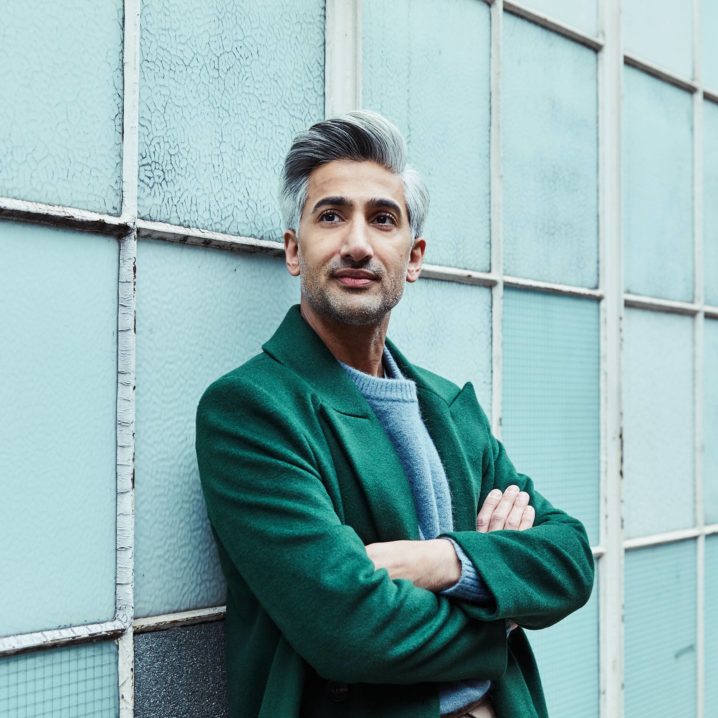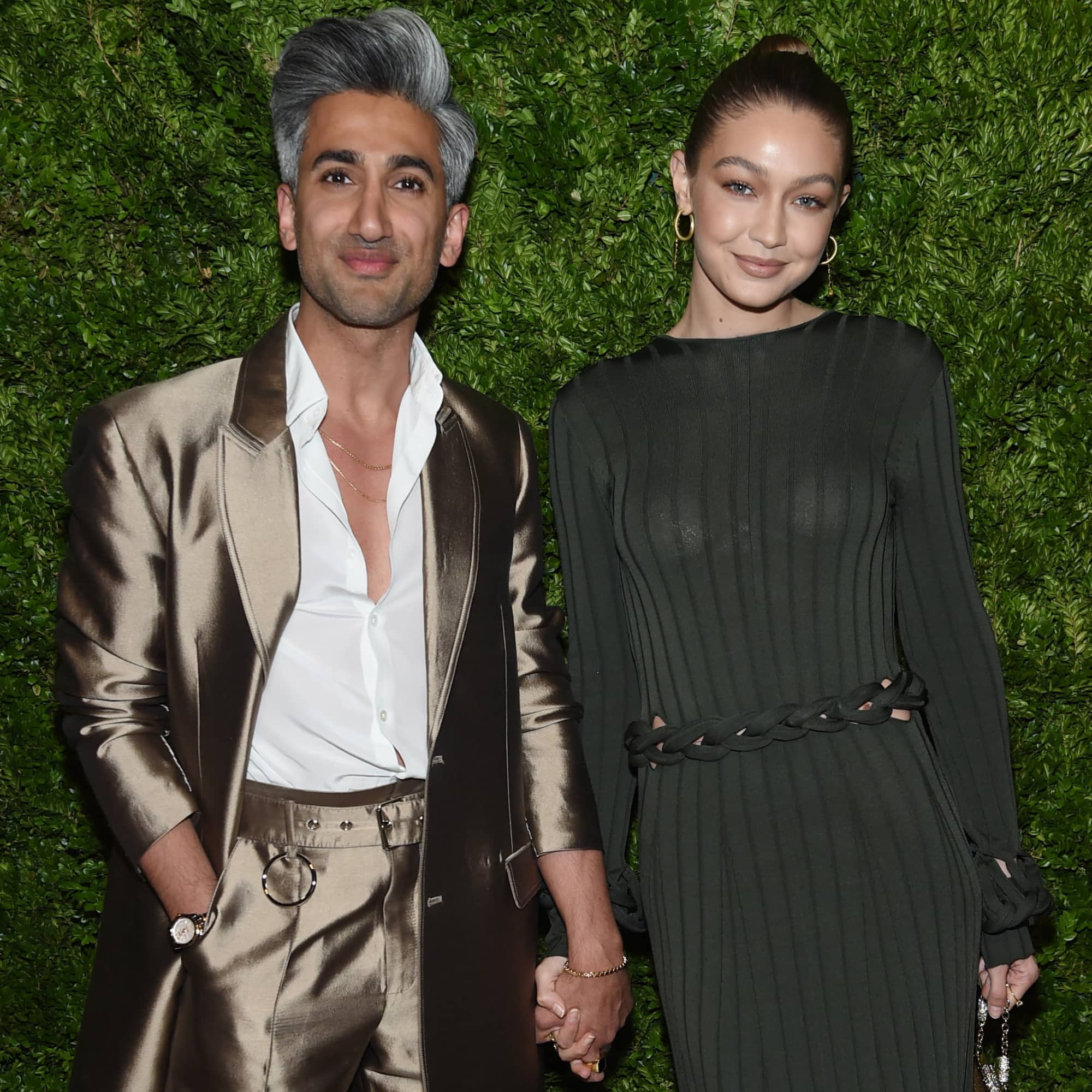
- POPSUGAR Australia
- Beauty
- Tan France First Bleached His Skin at 9 Years Old — Today, He’s Talking About Colourism
Tan France First Bleached His Skin at 9 Years Old — Today, He’s Talking About Colourism

At the age of nine, Tan France stole his cousin’s bleaching cream, hoping that after one application, his brown complexion would turn a few shades lighter. As he lathered it on, his skin began to sting, replicating the feeling of a painful sunburn.
The experience made him stay away from the chemical until he was a teenager, when feelings of shame and insecurity around his skin tone prompted him to give it another go.
France’s experience is not an exclusive one, particularly within the South Asian community. Coming from a Pakistani heritage, he was simply reacting to the colourist ideals that had been drilled into him from a very young age.
“When you’re in an Asian family, you’re always reminded that lighter is seen as more beautiful. The colour of somebody’s skin is literally a concern from the day that they’re born — lighter means beautiful, darker means unattractive,” France says in his documentary, Beauty and the Bleach.
“The one thing that was a constant in my childhood was being aware of my skin tone. There wasn’t a moment in my life for 17 years where I didn’t think about it.”
These words may seem unbelievable to those who have never experienced colourism, however, France’s story is one of millions. It’s one of the reasons he decided to create a documentary on the topic, as he’s seen first-hand how damaging the desire for fairer skin can be, not only to the individual but to those around them.
“I first created an Instagram account called Shaded, dedicated to speaking about colourism, and within the first few days, I got so many messages from people all over the world, sharing stories of their own experience,” France tells POPSUGAR Australia over Zoom.
“At the time, I thought I need to do something more than just an Instagram account, so that was when the idea of Beauty and the Bleach came about.
“It was the most emotional project I’ve ever done, and it was the most intimidating thing I’ve worked on.”
The concept of colourism dates back centuries. After the British colonised the region, men and women were forced to adapt to Eurocentric beauty standards.
While the Brits eventually left those countries behind, the damage they had caused had been done, and impacts people to this day.
From fairness creams being readily available on the market to people staying out of the sun out of fear that they’ll get darker, South Asian people are constantly reminded that it’s not their achievements or personality that will get them far; it’s the colour of their skin.
As a Pakistani myself, I’ve seen people around me face the harmful effects of colourism, from not being able to get married to being the butt of the joke at every family gathering. On the other end, I’ve witnessed how privileged light-skin Pakistanis are — almost as if their pale complexion gives them a free pass in life.
That’s not to say those who have fair skin don’t have problems, but they certainly don’t face issues because of the colour of their skin.
“It’s really sad, but I’m going to have to say: colourism will never go away. This is centuries deep, not just decades deep,” says France. “We’re not getting out of this anytime soon, and it’s really sad because anyone who looks into this topic can see how ludicrous it is to treat someone differently because of the colour of their skin.”
While France left the bleaching cream behind long ago, he still finds himself falling back into old habits, something that is only natural when you’ve been conditioned to believe something your entire life.
“I think anyone who has been raised in a family of colour has been exposed to colourism; whether it’s directed at you or not, you’re exposed to it. So I think it’s almost impossible to let go of those feelings completely. All we can do is work towards combatting those feelings,” France admits.
“However, I catch myself doing things that can be perceived as encouraging colourism, and I can’t help it sometimes. So I have to actively remind myself that that’s not who I am anymore.
“For example, if I’ve taken a picture on my phone and the lighting isn’t great, I want to brighten it out of fear of, ‘what would people say?’ I have to tell myself, ‘who cares what people say?’ So even though I’ve done so much work on understanding colourism, I think it’s going to be a lifelong thing.”
There is a gut-wrenching detail that’s important to note when hearing France’s story, one that changed his life forever. In 1988, at the age of five, the Queer Eye host walked to school by himself for the very first time. During that walk, he was chased down and beaten by a group of adult men, simply for being Pakistani.
It was at that moment he wanted to erase his identity and the melanin from his skin. For him at the time, bleaching was a form of self-protection.
“That experience never leaves you,” France explains. “I’m almost 40, and it happened almost 35 years ago, and it affects me till today. I still do not feel safe or comfortable visiting my hometown after all this time, and it makes me aware that someone will treat me terribly because of my skin colour.”
“It’s the reason I couldn’t return to my hometown in the documentary, even though many people behind the scenes wanted me to do it. But I made it very clear that I’m not doing any of this even if it makes for good TV.”
The topic of colourism is one that’s rarely talked about, but France explores the ins and outs, being the voice we’ve all desperately needed. Our brown skin should be celebrated, and while we still have a long way to go, the first step starts with us.
“Understand your history. Understand what makes your skin tone and your people beautiful. Even though other people might not see the beauty in it, it’s important for you to see it.”
Beauty and the Bleach is available to watch now on SBS On Demand.


